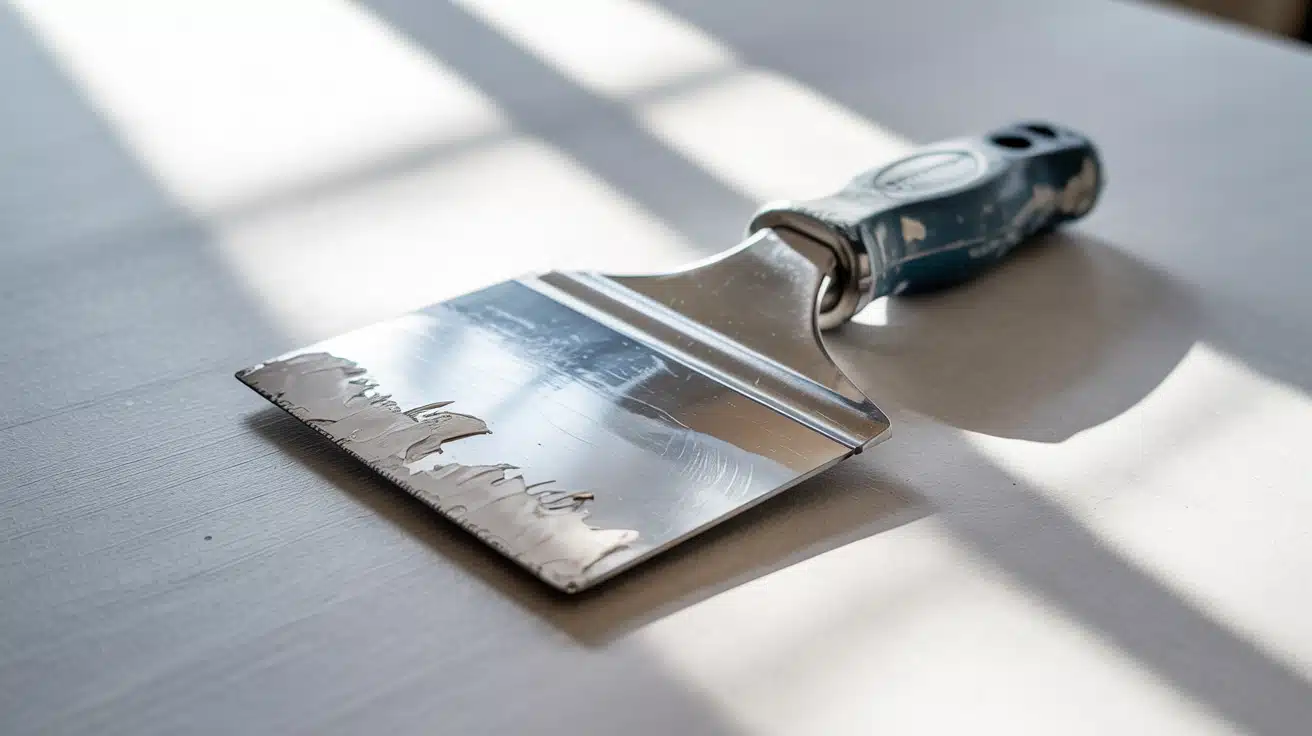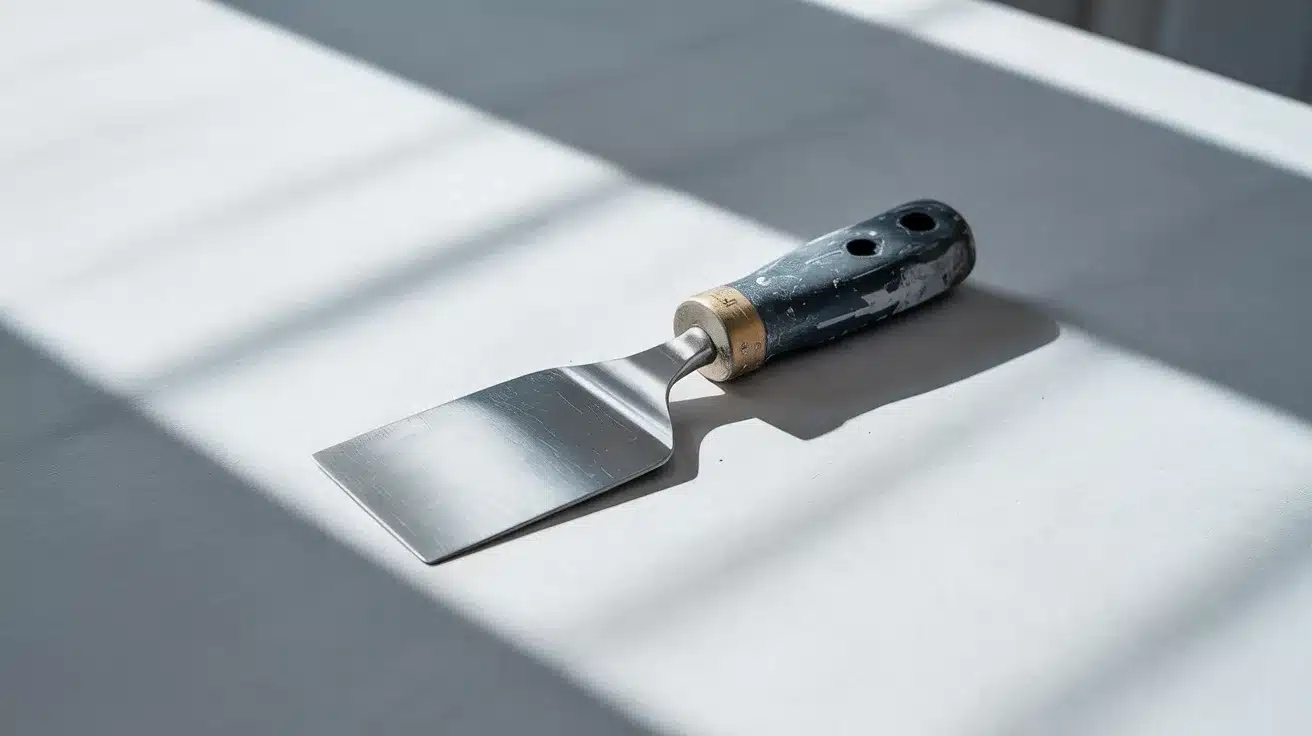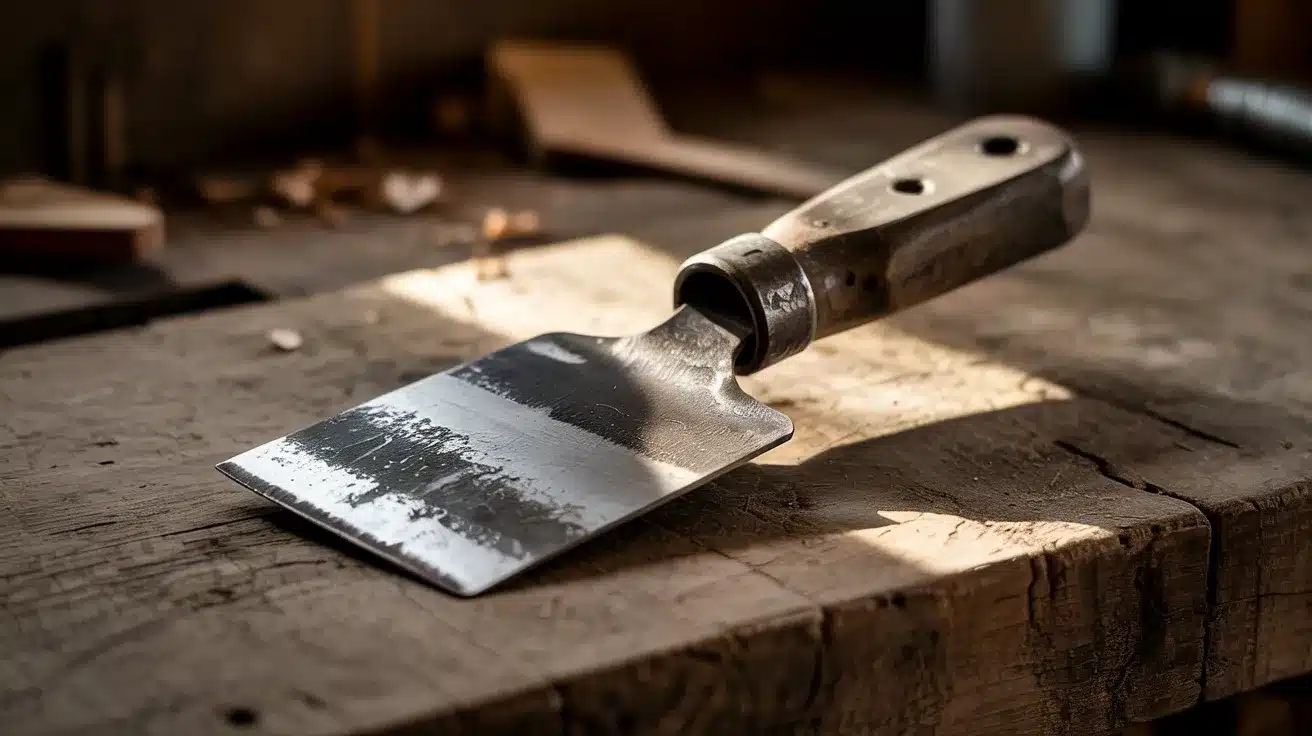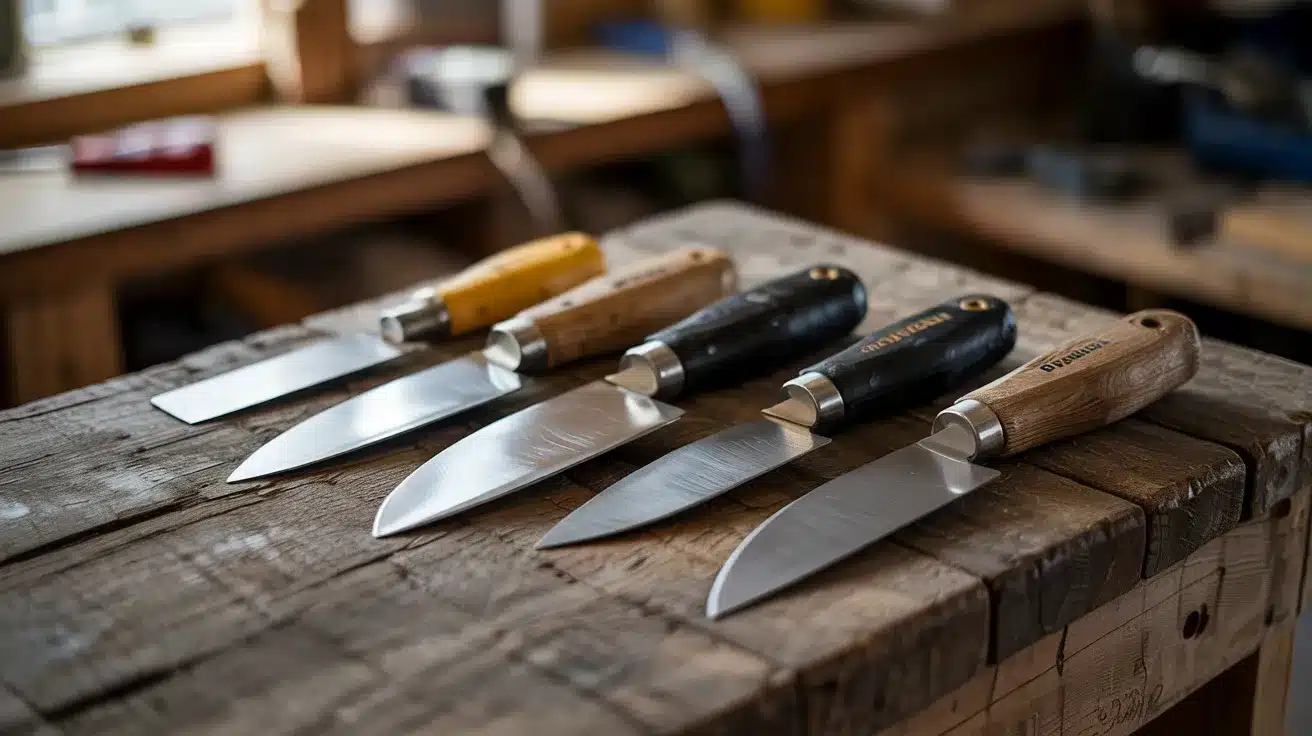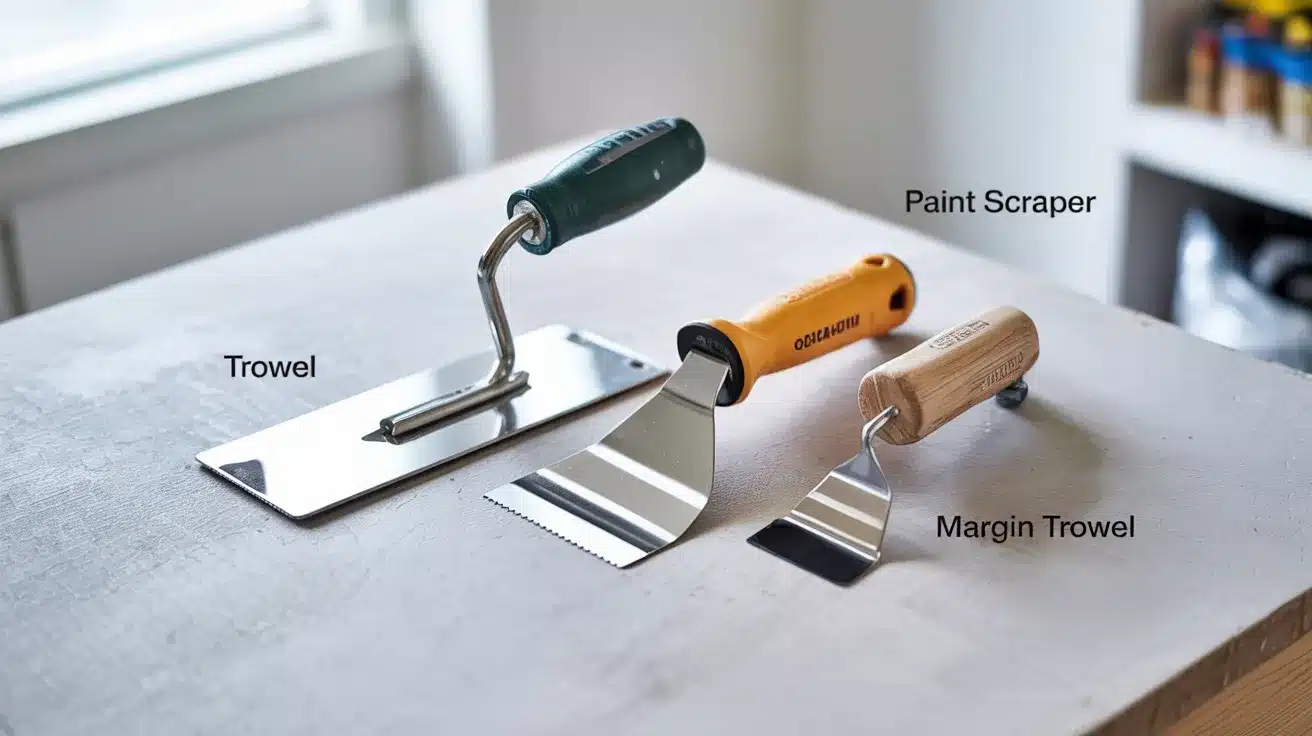Do you know that small tool sitting in your toolbox? The one with the flat edge you reach for when fixing walls? Yes, that’s a putty knife. Most folks don’t give it much thought until they need to patch a hole or scrape old paint.
Yet this basic tool saves time and stress during home repairs. But what exactly makes a putty knife different from other scrapers? And why do some cost $2 while others are priced at $20?
If you’ve wondered about these questions, you’re in the right place. This guide will walk you through the basics of putty knives without using fancy jargon. By the end, you’ll know exactly which type to grab for your next project.
Let’s explore this humble helper that makes wall repairs so much easier.
Understanding the Basics of a Putty Knife
A putty knife is a flat-bladed tool used for spreading, smoothing, and scraping materials during home repair tasks. It’s one of the most useful items in any toolbox, often pulled out for wall fixes and paint jobs.
- The blade is the flat working end that comes in contact with surfaces.
- Most blades are made from stainless steel, carbon steel, or plastic.
- Blades vary in width, ranging from 1 inch to 6 inches, to accommodate different job sizes.
- They also differ in flexibility; stiff blades work best for scraping, while flexible ones spread the material more evenly.
The handle is where you grip the tool and affects how comfortable the knife feels during use.
- Wood handles feel traditional and provide a solid grip.
- Rubber handles offer better control when hands are wet.
- Plastic handles are lightweight and typically less expensive.
Good putty knives strike a balance between comfort and function. When you hold a quality putty knife, it should feel natural in your hand, helping you work longer without strain. The right one depends on your specific task.
Types of Putty Knives and Their Specialties
When you walk down the hardware store aisle, you’ll see many types of putty knives. Each one serves a specific purpose. Knowing which one to pick can save you time and make your project easier.
Let’s look at the main types of putty knives and when to use each one:
| Type | Blade Style | Best For | Common Width | When To Use |
|---|---|---|---|---|
| Standard | Medium flexibility | General tasks | 1.5″ – 3″ | Everyday repairs |
| Flexible | Thin, bendable | Smoothing compounds | 2″ – 4″ | Applying putty or spackle |
| Stiff | Thick, rigid | Heavy scraping | 1″ – 3″ | Removing old paint |
| Taping/Joint | Extra wide | Large surfaces | 4″ – 12″ | Drywall seams |
| Scraper | Beveled edge | Tough removal jobs | 1″ – 3″ | Stripping wallpaper |
| Glazing | Offset blade | Window work | 1″ – 1.5″ | Window putty |
| Joint | Specialty design | Drywall finishing | 4″ – 12″ | Professional drywall |
The right putty knife makes your job faster and gives better results. Many DIY fans keep several types on hand for different tasks.
Choosing the Right Putty Knife
Selecting the perfect putty knife involves matching the tool to your specific task. Here’s how to choose wisely.
1. Blade Material: Stainless Steel vs. Carbon Steel
The blade material affects durability, flexibility, and the types of jobs the knife can handle.
Stainless steel blades resist rust and clean up easily. They cost more but last longer, even when exposed to water. They maintain their edge well and work with most materials.
Carbon steel blades are usually stronger and hold a sharper edge. They cut through tough materials better than other options. However, they can rust if not dried after use with water-based products.
- Stainless steel is best for most jobs and lasts for years.
- Carbon steel provides more strength for difficult scraping.
- Plastic works well when you need to protect delicate surfaces.
2. Width & Flexibility
The width and flexibility of your putty knife determine how it performs on different surfaces.
Narrow blades (1-2 inches) fit into small spaces and offer better control for detail work. They work well for patching small holes and cracks, as well as working in tight corners.
Wide blades (3-6 inches) cover a larger area more quickly. They’re ideal for large wall repairs and spreading compounds over bigger sections. They save time but offer less precision.
- Use narrow blades for small repairs and tight spots.
- Choose wider blades for large wall sections and faster coverage.
- Keep both sizes on hand for different parts of the same project.
Flexibility matters just as much as width. Stiff blades scrape more effectively while flexible ones spread more smoothly.
3. Handle Comfort
The handle design becomes crucial during longer projects when hand fatigue becomes an issue.
Soft-grip handles reduce hand strain during extended use. These rubber or cushioned handles prevent slipping when your hands get tired or wet.
Wooden handles offer traditional comfort and good balance. They tend to last long but may not be as comfortable during extended use.
- Select soft grips for use in wet environments or for extended projects.
- Test the feel in your hand before buying, when possible.
- Consider weight distribution for better control during detailed work.
Why Every DIYer (and Even Professionals) Swears by It?
Home repair experts love putty knives because they solve numerous problems with a single, versatile tool. Both weekend warriors and seasoned pros keep them close at hand.
People who fix things for a living trust putty knives for their versatility. The tool shines when applying fillers to walls and wood. It spreads spackle smoothly into holes from nails, screws, and small damages. The flat edge creates a level finish that’s easy to sand later.
- Putty knives are used to apply wall compounds with control and precision.
- They help spread the right amount of material without waste.
- They create smooth finishes that require less sanding afterward.
Beyond filling holes, these tools excel at removal tasks. They slip under old paint to lift it away from surfaces. The thin edge works under wallpaper edges to help with stripping. They also remove old caulk from tubs and sinks without scratching.
- The rigid edge lifts stubborn materials without damaging the underlying surface.
- The blade fits into tight spots where fingers can’t reach.
- It provides leverage to remove stuck-on materials.
This simple tool saves time and delivers better results than improvised solutions. That’s why professionals don’t leave home without one—and why DIYers soon learn they need several sizes in their toolbox.
Best Putty Knife Brands and Product Picks
Finding quality tools makes any job easier. These top putty knife options deliver excellent results for a wide range of projects.
1. Wedi Putty Knife
Wedi Putty Knife stands out with its well-balanced design and sturdy construction. The handle fits comfortably in most hand sizes and reduces strain during long projects. Its stainless steel blade resists bending and maintains its shape even with heavy use.
The blade edge remains sharp throughout multiple projects and cleans up easily. Users report that the Wedi knife spreads compounds more evenly than budget options. The price falls in the mid-range, offering good value for its quality.
Specialty: The Wedi knife excels at applying joint sealant in shower systems and spreading thin, even layers of waterproofing materials.
2. Profilitec Showertec Kits
Profilitec Showertec Kits include specialized putty knives designed for bathroom waterproofing. These tools feature slightly flexible blades that conform well to corners and curved surfaces. The kit comes with multiple blade widths to handle different areas of shower installations.
The handles resist slipping when wet, a crucial feature for use in the bathroom. The blades are treated to resist water damage and maintain their integrity despite constant moisture exposure.
Specialty: These kits include unique corner tools specifically designed for waterproofing the tricky 90-degree angles in shower installations.
3. Laticrete Hydro Ban Tools
Laticrete Hydro Ban Tools offer professional-grade putty knives for serious sealing projects. The blades have precise edges that create clean lines when applying waterproof membranes. These tools feature reinforced shanks that connect the blade firmly to the handle.
The ergonomic handles reduce wrist strain during repetitive movements. Each knife is tested for consistent performance and durability in challenging conditions.
Specialty: Laticrete tools are specifically calibrated to apply their waterproofing compounds at the exact thickness required for proper curing and performance.
Putty Knife Alternatives You Should Know
Sometimes, a putty knife isn’t the best tool for the job. Here are some alternative options that may be more suitable for specific tasks.
1. Trowels: offer a larger surface area and greater control for larger projects. These tools have triangular or rectangular blades with bent necks and handles designed for spreading. Brick trowels spread mortar between bricks, and concrete trowels smooth wet concrete surfaces. Notched trowels apply adhesive for tile work with consistent thickness.
- Trowels work better than putty knives for covering large areas.
- They hold more material in one scoop.
- They create more even finishes on large surfaces.
2. Paint scrapers: have thicker, sharper blades for removing stubborn materials. Unlike putty knives, they’re built specifically for removal rather than application. The blades often have replaceable edges that stay sharp. Many include knuckle guards to protect hands during heavy scraping work.
- Paint scrapers remove multiple layers of paint faster than putty knives.
- They apply more force without bending.
- They work better for stripping jobs, but can damage surfaces if used carelessly.
3. Margin trowels: bridge the gap between putty knives and full-sized trowels. These small trowels feature rectangular blades that are approximately 5 inches in length. They offer more control than large trowels but hold more material than putty knives. They excel at small patching jobs and working in confined spaces.
- Margin trowels offer better control than full-sized trowels.
- They hold more compound than putty knives.
- They work well for medium-sized wall repairs.
Use a putty knife for small repairs, detailed work, or when precision is required. Switch to alternatives when covering large areas, removing tough materials, or working with thicker compounds that would overload a putty knife.
Conclusion
Putty knives might seem basic, but they’re workhorses that handle countless tasks. From filling wall holes to removing old caulk, these simple tools earn their place in every toolbox.
Remember to match the knife to your job. Flexible blades spread fillers smoothly. Stiff ones tackle tough scraping. Width matters too – narrow for details, wide for speed.
Quality matters with putty knives. Brands like Wedi, Profilitec, and Laticrete offer reliable options that last longer than bargain tools.
For larger jobs, consider alternatives such as trowels or scrapers that may work better.
Next time you tackle a home repair, you’ll know exactly which putty knife to grab. This small tool makes a big difference in your results – and now you know why.

